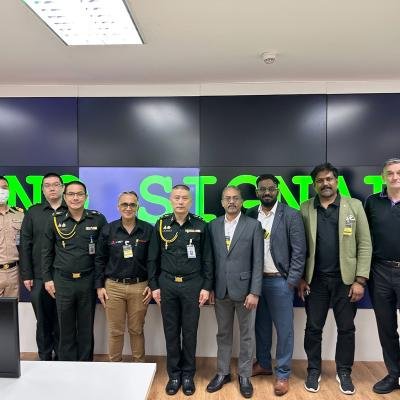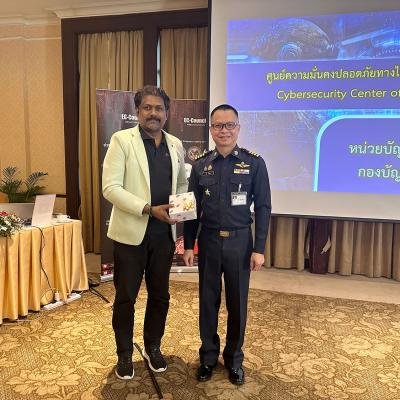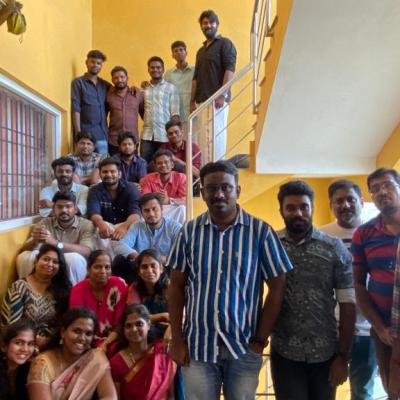In the intricate realm of cybersecurity, where the landscape is ever-evolving and threats are becoming more sophisticated, social engineering stands out as a formidable adversary. This deceptive practice relies on manipulating human psychology to infiltrate corporate networks, breaching defenses that may appear impervious. In this blog, we embark on a journey into the heart of a specific case study, unraveling the layers of a social engineering attack within the esteemed halls of one of India's industrial titans - TATA Motors.
Understanding Social Engineering
Definition and Methods
Social engineering, at its core, involves the manipulation of individuals to divulge sensitive information or perform actions that compromise security. This nefarious practice encompasses a variety of methods, including phishing, pretexting, baiting, and quid pro quo. To comprehend the nuances of the TATA Motors case, it is essential to first grasp the fundamental principles of social engineering.
The TATA Motors Case: Prelude to Intrusion
Initial Breach
The TATA Motors case serves as a stark illustration of how attackers exploited human vulnerabilities to gain entry into the corporate infrastructure. By assuming false identities and employing psychological tactics, the perpetrators deceived unsuspecting employees, enticing them into unwittingly providing access points to the organization's digital bastions.
Anatomy of the Attack
Phishing Campaigns
One of the primary weapons wielded in the TATA Motors attack was a sophisticated phishing campaign. Crafted with precision, the attackers designed emails that impersonated trusted entities, duping employees into clicking on malicious links or downloading infected attachments. This initial compromise laid the foundation for the attackers to establish a covert presence within the corporate network.
Pretexting: Manipulating Trust
Building Trust to Break Trust
The TATA Motors attackers were adept at pretexting, an art that involves creating elaborate scenarios to manipulate employees into divulging sensitive information. By assuming the guise of colleagues, vendors, or even superiors, they exploited the intrinsic trust within the organization, gradually extracting valuable data and intelligence along the way.
Baiting and Quid Pro Quo
Exploiting Human Curiosity
Baiting involves enticing individuals with something appealing, such as a free software download or an enticing link. Quid pro quo involves offering something in exchange for information. In the TATA Motors case, these tactics were deployed to exploit human curiosity and goodwill, further compromising the organization's security posture.
Impact and Lessons Learned
Repercussions
The aftermath of the social engineering attack on TATA Motors was profound, with sensitive corporate data compromised and potential financial losses looming. Beyond the immediate impact, the incident underscored the necessity for a comprehensive cybersecurity strategy that not only incorporates robust technological defenses but also emphasizes employee awareness programs.
Mitigation Strategies
Educating the Workforce
To counter the growing threat of social engineering, organizations, including TATA Motors, must invest in continuous employee education. By fostering a culture of cybersecurity awareness, employees become the first line of defense against social engineering attacks. Training programs should not only cover the basics of recognizing phishing attempts but also delve into the subtleties of pretexting, baiting, and quid pro quo.
Technological Safeguards
Deploying advanced security technologies is paramount in fortifying an organization against social engineering attacks. Email filtering systems can intercept malicious messages before they reach the inbox, while endpoint protection ensures that individual devices are shielded from potential threats. Implementing multi-factor authentication adds an additional layer of defense, making it more challenging for unauthorized individuals to gain access to sensitive systems.
Cultivating a Cybersecurity-Aware Culture
Beyond the conventional approaches to cybersecurity, cultivating a culture of vigilance is essential. This involves creating an environment where employees are not only aware of the potential threats but also feel empowered to report suspicious activities. Regular simulations of social engineering attacks can be instrumental in honing the organization's collective response to such incidents.
Collaboration with External Experts
Recognizing the dynamic nature of cyber threats, organizations must consider enlisting the expertise of external cybersecurity professionals. Regular assessments, penetration testing, and vulnerability scans conducted by skilled professionals can identify weaknesses in the security infrastructure, allowing for preemptive remediation.
Examples and Evidence:
- Phishing Emails:
- Example: Attackers send emails posing as TATA Motors IT support, asking employees to click on a link to update their login credentials due to a supposed security breach.
- Evidence: Email logs showing a spike in employees clicking on the malicious link, leading to compromised login credentials.
- Pretexting:
- Example: Impersonating a TATA Motors executive, an attacker calls an employee claiming urgency and convinces them to disclose sensitive project details.
- Evidence: Call logs indicating unusual communication patterns and the subsequent discovery of leaked project information.
- Baiting:
- Example: An attacker leaves USB drives labeled as "Employee Bonus Details" in common areas. Curious employees plug them into their computers, unknowingly installing malware.
- Evidence: IT logs identifying the introduction of unauthorized software and subsequent security breaches.
- Quid Pro Quo:
- Example: Posing as a vendor, an attacker contacts an employee, offering a free software tool in exchange for login credentials.
- Evidence: Employee reports of unsolicited contact and subsequent unauthorized access traced back to the provided software.
- Impact and Repercussions:
- Example: Stolen proprietary designs from TATA Motors are found on the dark web, indicating a potential compromise of intellectual property.
- Evidence: Monitoring dark web forums and identifying TATA Motors data being offered for sale.
- Mitigation Strategies:
- Example: After implementing multi-factor authentication, a significant drop in unauthorized access attempts is observed.
- Evidence: Security logs highlighting successful MFA verifications and a decline in reported security incidents.
- Cultivating a Cybersecurity-Aware Culture:
- Example: A simulated phishing exercise reveals a decrease in the number of employees falling for phishing attempts after targeted training.
- Evidence: Metrics showing a decline in successful simulated phishing attacks and an increase in employees reporting suspicious emails.
- Collaboration with External Experts:
- Example: Regular penetration tests conducted by external cybersecurity professionals reveal and address vulnerabilities before malicious actors exploit them.
- Evidence: Reports from external cybersecurity firms documenting vulnerabilities identified and steps taken to remediate them.
Conclusion
In our exploration of the intricate web of social engineering attacks on Indian corporations, particularly through the hypothetical lens of the TATA Motors Case, the depth of the threat landscape becomes evident. DigiALERT, as a guardian of digital domains, emerges as a crucial ally in the ongoing battle against cyber adversaries.
The fictitious narrative we crafted around TATA Motors serves as a compelling reminder of the multifaceted nature of social engineering attacks, where cybercriminals exploit human psychology to breach corporate fortifications. The devastating consequences depicted underscore the importance of a robust cybersecurity strategy that encompasses both technological fortifications and a vigilant, educated workforce.
As we conclude this comprehensive examination, it becomes clear that the key to resilience lies in proactive measures. DigiALERT, with its arsenal of cybersecurity solutions, stands at the forefront, ready to empower organizations in their defense against social engineering attacks. The synergy of employee education programs, advanced technological safeguards, and a cybersecurity-aware culture becomes the cornerstone of a fortified digital ecosystem.
The impact of social engineering attacks extends beyond immediate financial losses; it jeopardizes trust, intellectual property, and the very foundation on which corporations operate. DigiALERT, through continuous employee education initiatives, not only equips individuals to recognize and thwart social engineering attempts but also cultivates a culture of collective responsibility.
Technological safeguards, such as email filtering, endpoint protection, and multi-factor authentication, are the shields that DigiALERT deploys to fortify the digital perimeters. The collaboration with external cybersecurity experts further ensures that organizations stay ahead of the curve, preemptively identifying and remedying vulnerabilities before malevolent forces exploit them.
In this ever-evolving landscape, DigiALERT's commitment to innovation and adaptability becomes a linchpin for organizations seeking not just security but resilience. The hypothetical TATA Motors Case serves as a cautionary tale, urging corporations to heed the call for a comprehensive cybersecurity strategy that considers the intricate dance between technology and human behavior.
As we unravel the intricacies of social engineering attacks, DigiALERT stands as a beacon, guiding organizations through the unseen tides of cybersecurity. In a world where threats are dynamic and devious, DigiALERT is not just an ally but a digital guardian, arming businesses with the tools and knowledge to navigate the complexities of the ever-changing cybersecurity landscape. Together, we forge a path towards a secure digital future.







